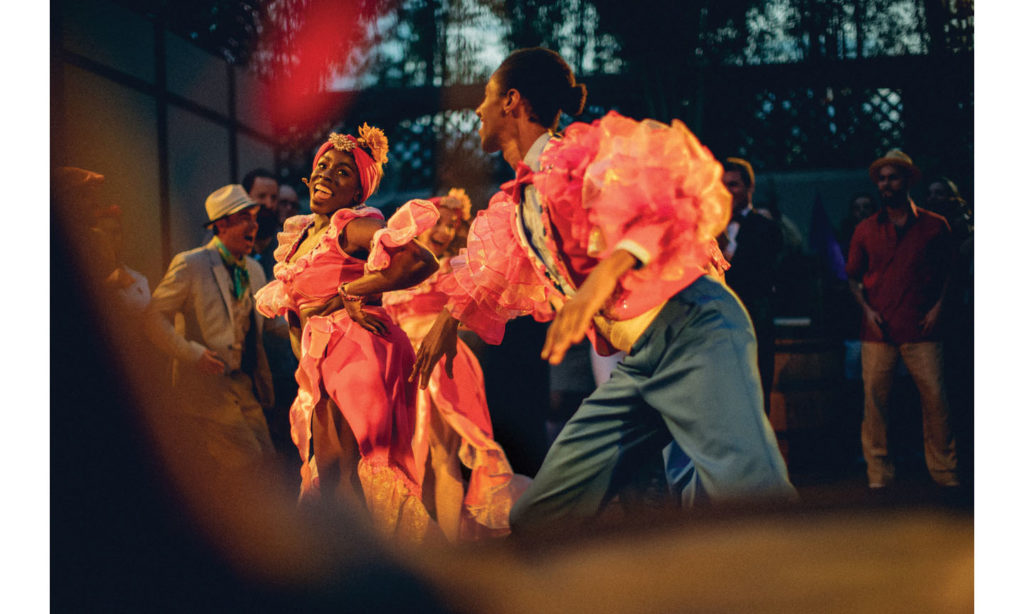Cuban Spirit
Havana Club’s immersive theater performance takes you through a Cuban rum family’s compelling story of loss, exile and legacy.
It’s dark. I’m near the middle of a huddled group that’s swaying rhythmically, side to side, as you would when you’re keeping your balance on a boat in choppy waters. Each of us has a hand on the shoulder of the person in front of us, which — together with the song that some are singing — leads us to almost involuntarily synchronize our swaying.
Just as I was getting sucked into the sound of waves steadily lapping up against the side of a boat, I realize that the guy in front of me, on whose shoulder I’ve placed my right hand, is being gently comforted by his wife. He’s crying.
He probably never imagined that a theater production built around the story of a rum brand would put him there, but in this scene from The Amparo Experience — an immersive show created as part of a push Bacardi is making with its Havana Club brand — Juan Gil had been transported south to the Florida Straits and flung back in time nearly 30 years to the day that he made his way to the United States in what’s now known as the Mariel Boatlift. The journey in the play takes place long before that, but when your life makes a hard pivot on the open water, those sounds always take you back to your own journey.
The background
The right to call a rum “Havana Club” is at the heart of a heated legal and historical dispute that serves as an avatar for the bigger conflict between the Cuban government and those who say that government took everything from them. Before diving into The Amparo Experience and the current campaign behind the Havana Club that’s made in Puerto Rico, it’s worth taking a moment to review the brand’s Cuban roots.
The Havana Club rum produced in Cuba is the one that probably comes to mind when you hear that brand name. Like so many other brands that have been produced in Cuba since before the Castro revolution — not just in rum, but in other product categories, including cigars — the brand has a history of expropriation by the state. The Arechabala family’s company, Jose Arechabala S.A., started making rum on the island in 1878 and first registered the Havana Club name in 1934.
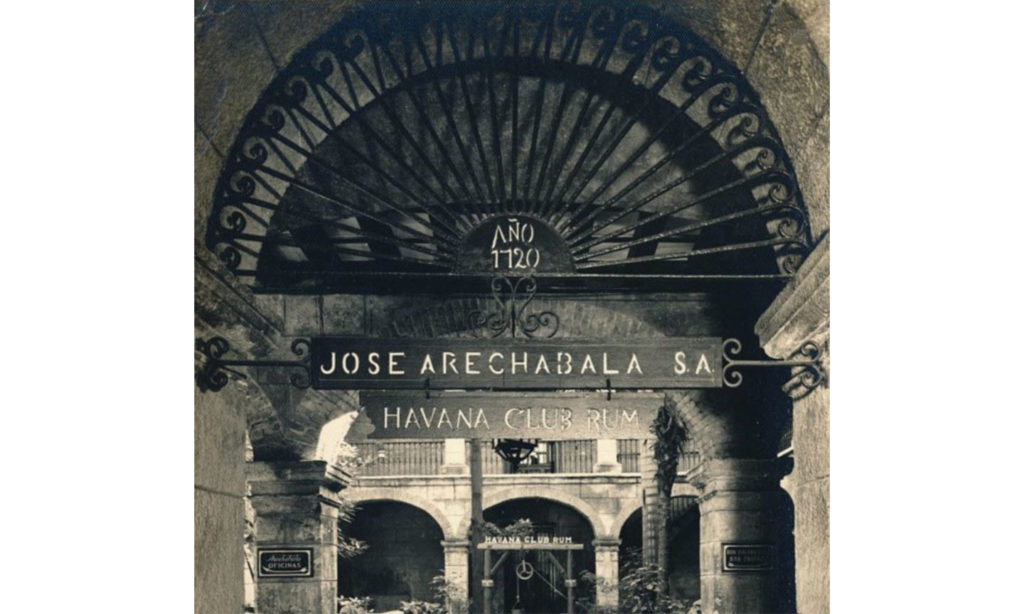
By the time Fidel Castro’s 26th of July Movement began making its way across Cuba, Havana Club rum had become a national symbol for glitz and celebration. The revolution rode into Havana and took power, interrupting New Year celebrations in the wee hours of January 1, 1959. By the end of 1960 the Cuban government had nationalized $25 billion of private property owned by Cubans (about $190 billion in today’s currency). And among all that property was the Arechabalas’ entire operation. Unlike the Bacardis, who had set up manufacturing in Puerto Rico in time to fall back on that when the revolution came, the Arechabalas were left with nothing but their recipe and a U.S. trademark.
That trademark was registered in the U.S. to the Arechabalas until 1973, when it lapsed. According to the family, this was because Javier Arechabala, the attorney in the family, had been unable to renew the trademark. Javier had a decent excuse; he hadn’t gotten out of Cuba, as he was still a prisoner of the Cuban government. In any case, the Cuban government had begun selling rum under the Havana Club name abroad (primarily in Russia and Eastern Europe) the previous year and it pounced on the opportunity to take the American rights to “Havana Club” out from under the Arechabalas’ noses.
And that’s exactly what the Cuban government did. But as long as the U.S. trade embargo on Cuba was in place, there wasn’t much that the Cubans could do with that brand other than sit and wait for a massive market to open up 90 miles away.
In 1993, French beverage company Pernod Ricard joined the Cuban government to create a 50-50 state-run venture called Corporación Cuba Ron. Pernod Ricard is the corporation behind Beefeater, Chivas Regal, Absolut Vodka, Jameson, The Glenlivet, Malibu, and Ballantines, to name a few brands in their portfolio. All of which is to say that the Cubans had partnered with a powerhouse in the spirits world, and just as the regime was looking for ways out of the economic catastrophe that was just beginning on the island. Known as Cuba’s “special period,” this was a stretch of extreme poverty following the collapse of the Soviet Union.
The modern conflict over the Havana Club name begins in earnest in 1994, when Bacardi obtains naming rights from the Arechabala family and sells close to a thousand cases of Havana Club rum in 1994 and 1995. Pernod Ricard takes Bacardi to court and wins three rulings. But then in 1998 Congress passes legislation that keeps the Cuban government from making claims to trademarks it expropriated.
There’s more to the story, but here’s where things stand in a nutshell: we now have two spirits industry juggernauts duking it out over who gets to use the name “Havana Club.” But forget about the law for a moment. Where do you stand? What if the government took everything your family had built over generations and then claimed your brand for itself? What if you had to watch from exile as that government shipped bottles of rum made with the equipment that belonged to you and bearing the name your family made iconic?
What if you had the recipe? What if you still had friends in high places who could help you breathe new life into your family’s legacy?
Is the brand tethered to a place? Or is it tethered to its owners? Can any government really nationalize a legacy?
What does it mean for one of these rums to be “the real Havana Club?”
How they’re telling their story
I’ll be up front about my position here. Why be coy about it? Cuba’s Havana Club rum is effectively manufactured with slave labor using stolen equipment and a name that doesn’t belong to the people who are profiting from its sale. And Pernod Ricard is a party to it all. That’s where I stand.
The thing is, though, that you don’t have to agree with any of that. The point of The Amparo Experience is for you to dive into the Arechabala family’s story. It’s a crash course on their perspective and, ultimately, their and Bacardi’s case in the dispute over which is the “real” Havana Club.
“One of my life’s missions is to tell the story of Cuba, and that comes from a very personal place,” said playwright Vanessa García. Her parents were born in Cuba, where one of her grandparents did time as a political prisoner. Her father died at 50 never having returned to Cuba. “The lens that is pointed at Cubans has always been from the outside and therefore unclear and inaccurate. And so I felt immediately when I started to research the Arechabala story that this was a story that told all of our stories and that was able to stand as universal to the Cuban experience.”
The Amparo Experience that audiences are seeing in downtown Miami now evolved from much smaller productions in New York City and Miami’s Little Havana neighborhood. When Team Enterprises — the branding firm behind just about all of Bacardi’s major campaigns, including The Amparo Experience — was ready to go all-out with the concept, they went to the theater production group Broadway Factor.
“We get a phone call from Team. They had performed two one-nighters — one here in Miami and one in New York City — to try to see where this would go,” said executive producer George Cabrera, who created Broadway Factor along with William Fernández, Jim Kierstead and Deborah Ramírez. “I remember when we had our first meeting at the Bacardi offices. We’re going through this whole play … My eyes were watering because it was something that was near and dear to my heart. I knew we would have been the best production company to assist in making the show happen. From there it just, it just took off. It just took off.”
Your Amparo journey starts on a high when you’re greeted at an intimate bar offering a handful of cocktails that feature Havana Club rum (which I won’t bother clarifying or qualifying since you know where I stand on which is the real deal) — more on the cocktails later in this piece. A team of lively bartenders brings the crowd of roughly 80 people into party mode when Roberto Torres, a singer whose music is in the nostalgic playlists of everyone in Cuban Miami, enters the bar with a microphone to mingle with the audience while leading you in a singalong of his greatest hit, Caballo Viejo. Here’s a translation of some of the lyrics.
A horse is put out to pasture because he’s old and tired
but they don’t even realize that a tied up heart,
when the reins are released,
turns into a wild horse
And if old horse finds a chestnut filly
his heart is unstrung; he’ll ignore the bridle
and he won’t obey the bit, and false reins won’t stop him.
When the song is through, Roberto instructs people to make note of the color of the pin they got when they checked into the show. Each color corresponds to a character in the Amparo story; you’ll be meeting and following that character around the building, from set to set, experiencing the Havana Club story from that perspective. All the stories begin with a series of 1950s New Year’s Eve parties at Havana’s Club Náutico. You get to know a number of characters like Amparo and Ramón Arechabala (the couple at the head of the company and the center of the story), singer Margarita María Mendoza, and distillery employee Antonio. When I say you get to know them, I mean that you’re walking through the club with them, they’re pouring you drinks, asking you questions, telling you their stories in corners of the room where only you can hear them over the music.
That is, until the music stops and the shit hits the fan in 1959.
From then on, the story shifts from feel-good romance — complete with a rom-com meet cute — to harrowing communist revolution roller coaster, complete with jail cells, extrajudicial executions and violent strip searches. And you’re right in the middle of all of it. It’s as intense a story as you’ll ever experience, and perhaps the only time you’ll see people literally weeping as they experience a branding firm’s campaign for a rum client. And all that is happening in at least five different ways throughout the show as audience members and the cast see their stories intersect and diverge. As I went through the story a second time to experience a new character’s perspective, I was struck by just how daunting it must have been to achieve the depth in each of these storylines that’s necessary to have audiences actually in it. The characters don’t just vanish, after all. There’s always an audience — if not you, then someone else.
“On one level it’s like writing horizontally and vertically at the same time,” Vanessa said, “which means you’re going across time and then through the depth of each person’s story. You’re writing 23 stories at one time that all intersect because if you followed any one of those characters, they each have an entire arc — beginning, middle and end.”
The script was written with the immersive nature of the show in mind, but that doesn’t mean that bringing it to fruition in real time and space was an easy task.
“I love puzzles,” said director Victoria Collado. “The challenge is always making sure that the timing is correct and that you [the audience member] don’t feel the mechanism. The challenge is making sure that the actors understand the machine and then get the freedom to play within that machine. Because the last piece of the puzzle is the audience. And that is a variable that changes every single night.”
The Amparo Experience is designed to run smoothly even if it has to contain some unexpected chaos. That chaos is bound to come any time you involve the audience in a show. Take that baseline risk and then factor in that members of the audience, who are going into this show after two or three cocktails and are being served additional shots by the performers during the play, have a personal, deeply emotional connection to the source material.
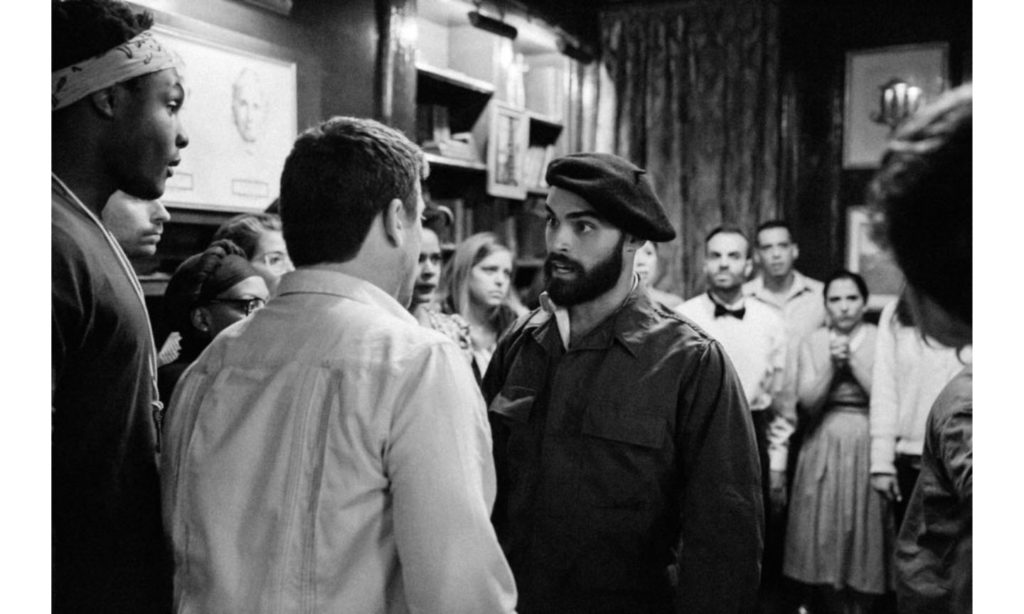
For instance, audience members are split into groups at a pivotal moment in the play. Castro sympathizers to this side of the room. Everyone else to that side. What do you do when someone in the audience won’t abide standing with the revolution, even if only for the sake of letting the story progress? Or more intense still, what do you do when (and this is a thing that actually happened according to the Amparo cast) it turns out that one of the audience members is in a jail cell with an actor playing a real-life Cuban who that audience member knows from their shared time as political prisoners in the ‘60s?
If you’re too young to have lived what the Arechabalas did, how real can actors make a memory you inherited from older generations? If you lived it, at what point does a scene become a flashback you can reach out and touch?
The Cuba connection
Practically everyone involved in The Amparo Experience has a personal connection to Cuba from lived experience. But for most, that experience looks very little like that of the characters they’re writing, directing or portraying in the show.
“Everybody that has worked on this show has a very personal tie to the story because it’s what our parents went through, what our grandparents went through leaving Cuba. I was born there and I left the island when I was nine years old,” said Bertha Leal, who plays the young Amparo Arechabala (whereas Susana Pérez plays the older present-day Amparo). “My dad is still on the island, so I still have a very deep connection to the story of exiles and living in exile and having to start over from scratch, which I think is really what The Amparo Experience is about — becoming an immigrant and taking the thing that was taken from you with you to start over again and in a new country.”
Having been born in Cuba also means that Bertha is among the cast and crew who have personal experience with the Cuban government’s Havana Club as household name rum.
“I’m sure that this is not something that would be very fun for Bacardi to hear, but for me it’s never been about selling rum,” she said. “It’s never been about selling something. It’s always been about just exposing the truth. I grew up in Cuba with Havana Club being the Havana Club, I always knew, which was the one that was made in Cuba. Starting to work on this project, it was like hearing for the first time there was no Santa Claus. I mean, I was basically listening to them tell me everything you believed about Havana Club has been a lie. To hear, ‘Oh no, that’s something that the government has fed you and it’s not real’ was huge.”
The Arechabala story is one that ought to sound familiar to cigar smokers. When the Castro regime nationalized everything, that “everything” included cigar tobacco farms, factories, and brand names that today — like Cuban Havana Club — are sold just about everywhere but the United States. That affected not only the owners of brands and farms, but also the workers, who were doomed to less promising futures in the cigar industry (if any at all) when it shifted into the hands of a state-run monopoly. The Oliva Cigar family was among those that lost everything in Cuba. Marcela Paguaga is the granddaughter of the late Oliva patriarch Gilberto Oliva, Sr. and she plays singer Margarita María Mendoza in The Amparo Experience.
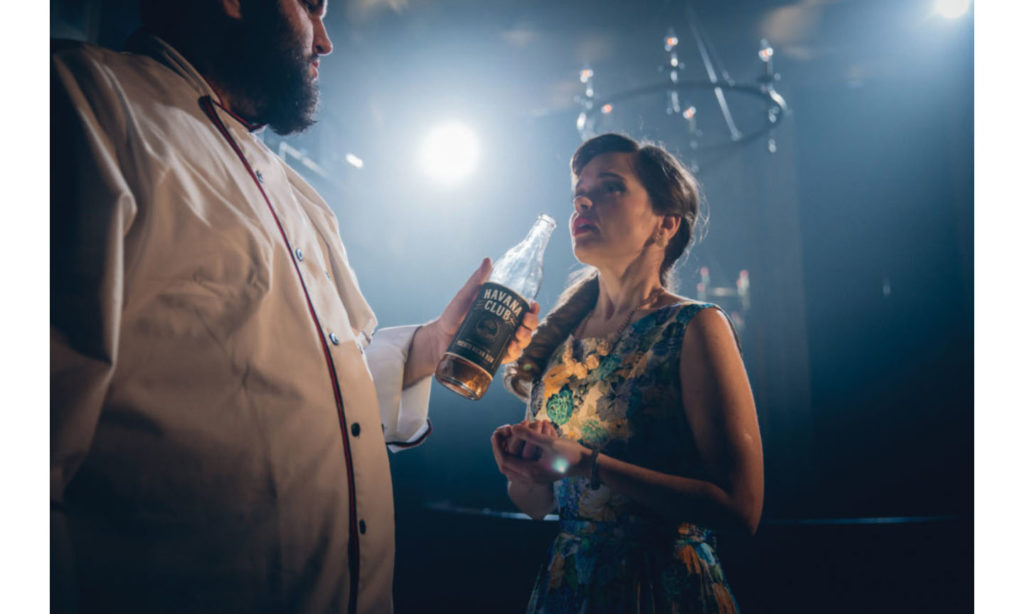
“Cigars have a huge part in my life. From a young age I remember the cigar talk, I remember the smell. It’s one of my favorite smells in the entire world,” Marcela said. “My grandfather always had a cigar in his hand. If it was lit, if it wasn’t lit, he always had one until his last day here. I walk into bars or lounges or restaurants, and if there’s a cigar humidor I go to see who they have. Do they have Olivas? I have this pride, because he worked so hard for it that it makes me smile every time I see them.”
Marcela doesn’t come from a family of distillers. But she did grow up with people who know what it means to make a living from the land, selling a product that takes its deep, personal meaning from the fact that it tells a family’s — and even a country’s — story. In fact, the Oliva story runs through armed political conflict in two different countries, as Gilberto, Sr.’s cigar journey was among those affected by the Sandinistas in Nicaragua. Still, Gilberto, Sr. had a reputation for not complaining, and as a result, Marcela says she never heard much from him about his struggles. In the end, booking the Amparo gig brought her closer to her grandfather’s stories, even after his death.
“I don’t know if it’s a Cuban thing or if it was just my grandfather, but he never talked [about] the bad. At least to us, he never spoke bad about Cuba or the bad things he had to go through. It was always, ‘I went through this and it taught me this.’ When he was eight years old, he was really sick. That didn’t stop him; it showed him that he had to work harder. When the revolution happened and he lost everything, he went out and he started over. I would hear these stories. I lost him a month before booking Amparo. I remember booking Amparo and kicking myself saying, ‘Why didn’t I sit down and ask more and learn more?’ So I sat down with my grandmother and I sat down with my mom and I said, ‘You guys need to tell me more stories. You need to tell me what he went through.’ I think hearing those stories and hearing those connections and then being able to do Amparo, which is a show about a family who lost it all and had to start over and did not give up… That’s his story.”
That the people behind the play have such a personal connection to Cuba and the pain of exile helps make it all the more powerful with Cuban American audiences. After I saw the performance for the first time, I spotted Juan, the guy from that boat scene who’d been crying while my hand was on his shoulder. We’d each just ordered cocktails at the bar in The Amparo Experience Rum Garden (again, we’ll get to that in a bit).
“Hey. Kind of weird, but my name is Nick and I’m writing something about all this for Cigar Snob. I’m also the guy who had his hand on your shoulder in that one scene. Would you mind if we talked for a bit for this article?”
It can be uncomfortable asking people for their help in working what’s clearly an intense, emotional moment of theirs into your work. Juan didn’t hesitate, though.
“Come with me. I have a story to tell you,” he said.
Juan told me all about the pivotal time in his life that he’d been sucked back into as we swayed to the sound of waves in the show. He was nine-going-on-ten when he learned that not only were he, his brother and his parents going to leave Cuba on the Mariel Boatlift (along with about 10,000 other Cubans who made the same journey from April to October 1980), but that he couldn’t say a word about it to anyone, lest someone try to sabotage his family’s escape, be it out of spite or out of some perverse loyalty to the revolution.
He remembers being in school as a young boy, where teachers would strike fear into students, warning them that if their parents spirited them away to the United States, they’d be headed to a place where the streets were crawling with gangsters waiting to shoot you and your parents would become criminals.
Eventually, it was time for him and his parents to leave. The idea was to get a cab at Juan’s grandmother’s house. They’d been found out by the neighborhood Castro loyalists, who had come out to the street to throw rocks and anything else they could hurl at Juan and his family as they walked the few blocks to his grandmother’s.
“My dad’s friends formed a circle around us. My brother and I were protected by my dad’s friends, who took the brunt of it,” Juan said.
He remembers seeing his grandmother and singing the tangos she loved to share with her grandkids for what would be the last time for many years.
He remembers the long car ride from his hometown of Sagua La Grande, Las Villas to Havana. He especially remembers sitting with his younger brother on the car ride, and he gets choked up as he tells me about the moment he saw his brother realize he might never see his family and friends again.
He remembers the fear that his parents’ records would reflect they had university degrees and were too valuable to the revolution to be allowed to leave. He remembers the relative kindness of the government agent who allowed his mother to keep her wedding ring.
He recalls the tent camp he and his parents stayed in for several days in Cuba before managing to get on a boat, and the fact that his parents never slept at the same time — because who knew who else was in that camp with them?
He tells me about the 50 passengers who ended up on the boat with him and his family. About half the people were making their way to reunite with family in the States, whereas the other half had just been let out of Cuban prisons as the Castro regime saw the boatlift as an opportunity for a purge.
And he laughs as he recalls his arrival in Key West, after four days of not peeing. A nurse who examined him on his arrival pressed down on his bladder. He suddenly felt a very American sense of urgency.
It’s a lot to think about. Imagine what it is to have it all come rushing back as you’re huddled with a crowd of strangers. It might sound like it would ruin a date night with your wife, but Juan sounded like he was ready to buy two more tickets.
Not long after I met Juan, I went through the show again, this time following a new character. My new perspective on the story brought me into one of the more intense and uncomfortable scenes in the script. As you join one of the characters for their attempt to board a flight out of Cuba, armed guards forcibly split your group along gender lines. Men to one side. Women to the other. Violent, even sexually abusive airport searches ensue.
Again, it would be impactful no matter who was behind the play. The fact that this is associated with a rum brand leaves no doubt that this issue is personal to the Arechabala and Bacardí families. Of course they hope they win your loyalty in the rum war. But if that were all they wanted, they’d hit you with more rum. Instead, they’re coming at you with some hard truths.
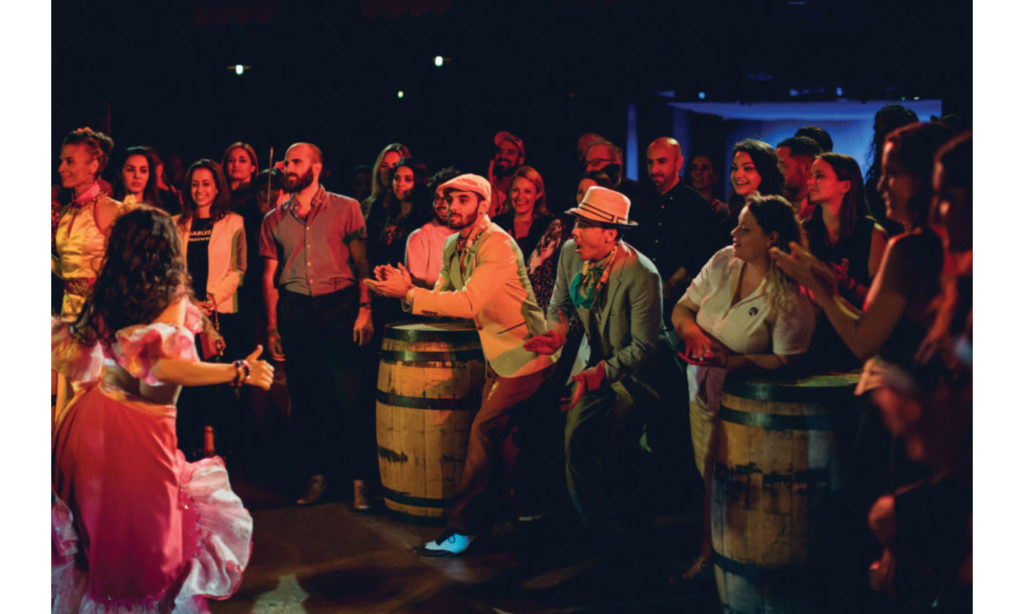
So hard, in fact, that I couldn’t help noticing another audience member who’d been shaken to the point of tears. Figuring that that had worked out for me with Juan, I went ahead and asked Kristen Sabina for an interview. Kristen was born in the States to a Cuban father. Like so many Cubans in Miami, she has political prisoners in her family tree and grew up with the stories of the trauma that brings.
“I work in advertising, so it’s very difficult for me because in part this is my career, which is to tell a story about a brand. This controversy [in branding] is very rare, but overall you’re always digging for the story behind the brand. You don’t invent a story,” Kristen said.
She added later in our chat that she felt conflicted about the show at times. On the one hand, maybe because she’s in advertising, she’d brought a healthy dose of cynicism to the play since it is motivated, at least in part, by a push to sell rum. When a story is that important and personal, how can you not worry that it won’t be told in good faith? On the other, the people behind The Amparo Experience told a powerful story that had clearly moved her.
“I don’t know, maybe I almost feel like you’re more critical [if you’re Cuban]. When you’re Cuban you’re already looking for the flaw,” she said. “But I love it. I think it’s been a beautiful experience.”
Of course, not everybody who buys a ticket to The Amparo Experience has a direct connection to Cuba. Non-Cubans are finding a lot to connect to here as well.
“People that don’t have the connection to Cuba have walked out really understanding what we went through,” George said. “The majority of the people who are not Cuban who have gone are able to connect it back to their history in some form, whether it’s Venezuelans or Nicaraguans, et cetera. They’ll say, ‘Wow, this is our story too. My family went through this. My relatives went through this.’ A lot of people from other countries see themselves living the same situation in their homeland.”
The story is personal to Bacardi as well, if that makes any sense. Still family owned, the Bacardí family doesn’t have to work too hard to tell a compelling brand story like the Arechabalas’. They’re a perfect steward of this rum history because they share so much of it and have made that history a part of their company’s culture.
“In about November of 2017, we were taking a look at our Havana Club brand that we’ve actually had since the ‘90s, and we really started a more national heavy push,” said Chris Ha, Bacardi’s North American brand manager. “The idea behind it was that we really wanted to showcase one of the things about this brand that’s different from a lot of the others. Its greatest asset, but also its greatest challenge, is the story that it comes from. It’s a very, it’s a very long and complicated story.”
What they came up with was the “Forever Cuban” campaign, which made use of the tag line, “Forced from home. Aged in exile. Forever Cuban.”
“What we were trying to instill was that although we’re not technically made within Cuba anymore, our roots are 100 percent still Cuban for various reasons — and those reasons you actually learn through The Amparo Experience,” Chris said. “So The Amparo Experience was actually something that stemmed from that campaign.”
Chris, a native of Canada who doesn’t have a personal connection to Cuba, noted that while the Arechabala story takes time to tell, in the end, anybody can understand the pain that comes from being on the losing end of a theft.
“I’m one of those people who didn’t totally understand the story until about three years ago,” he said. “And once it was told to me, I truly resonated with it. We were so dead set on being able to tell the story properly. If you created your own lemonade stand one day and it was successful, then somebody came in there, kicked you out of it, and sat down to sell it for themselves, how would it make you feel?”
A taste of what’s real
Powerful as the Arechabala story is, tales of exile have never been in short supply in Cuban Miami. What sets this family’s story apart from the rest is the rum. How does it compare to its communist Cuban counterpart and what sets it apart?
“What makes Cuban rum Cuban rum? What defines that style, right? It’s a dry rum,” said Gio Gutiérrez, Havana Club brand ambassador for the United States. ”And when I say dry, it’s that it’s not overly silky or sweet, doesn’t linger on your tongue and your palate.”
With that broad characteristic in mind, Havana Club is double aged, in keeping with the original Arechabala family recipe. That means that rather than taking distillates aged for various amounts of time and blending them right into the bottle, the aged rums are blended into new barrels, where they age for up to three additional months, allowing the components to marry. The result is a more mellow, elegant rum that comes in two varieties: Havana Club Añejo Blanco and Havana Club Añejo Clásico.
“With our Blanco, that rum is tropical,” said Gio. “You get bananas in there, you find some hints of vanilla, I get a lot of pineapple. It’s lovely. With the Clásico you start getting into more oak and what we describe as stone fruit. A lot of apricot.” The rum was made to be as close as possible to the product the Arechabalas were making from the 1930s until their flight from Cuba.
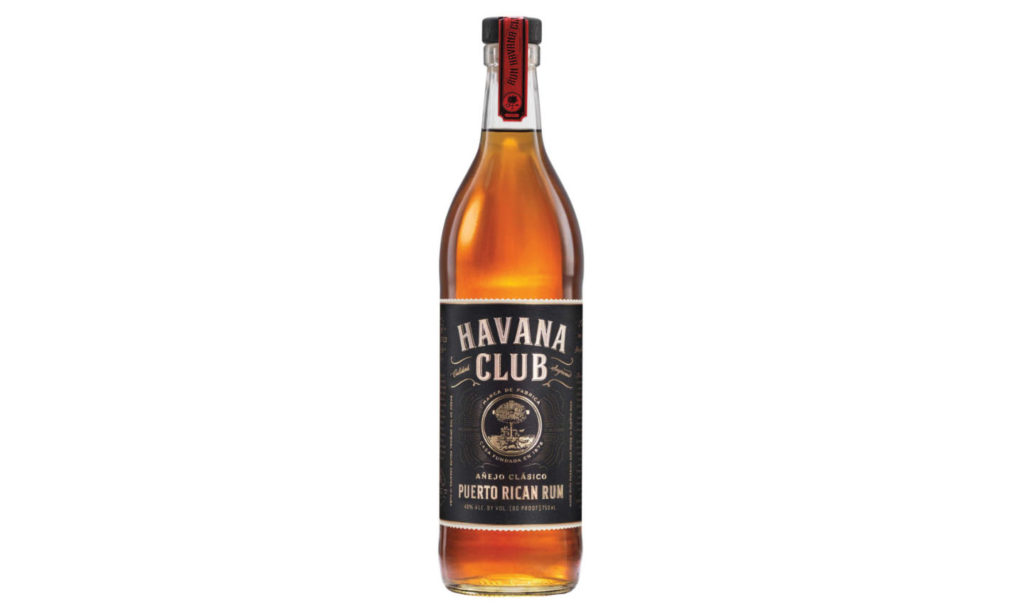
As I mentioned earlier in the piece, The Amparo Experience — especially the period right before the show starts and after the show’s over — serves as a showcase of cocktails featuring Havana Club rum. Gio had a hand in developing those menus as well.
“I wanted something for everyone,” Gio said. “I wanted to showcase the rum in different ways. So we have something like an Air Mail that was light and bubbly. We have a cocktail with coffee in it, which is the Havana Café; so the inspiration there was ‘What is Cuba in a glass?’ and for a lot of people it’s rum and coffee. You have a cocktail that was first made at El Floridita in the ‘30s using the original rum. And that is the Havana Especial. That is a cocktail that was named for the railroad line that took tourists that would go from New York down to Key West before you took a steam boat to Cuba. I grabbed that recipe and I tweaked it for today’s palate. We simplified, we didn’t get crazy molecular and modern. They’re drinks you could make at home.”
There are other cocktails on the menu. The point here is that The Amparo Experience makes use of craft and the communal experience of the cocktail bar to tell and draw you into the Havana Club brand story before and after the play.
“There is one named Bertica,” said Bertha, “which has my same name, but it only happens to have my name because Gio’s mom’s name is Bertha and he named it after her. Still, I’d say Bertica is my favorite.” When Gio’s family left Cuba, Gio’s mother Bertha hid some cash in her shoe. That tidbit was incorporated into the play; one of the characters stuffs cash into a shoe in preparation for a flight out of Cuba.
The cynic in me wants to say that I’m just being a sucker. That I’ve bitten — hook line and sinker — on an elaborate heartstring-tugging marketing ploy to win me over as a loyal Havana Club drinker by appealing to my son-of-exiles sensibilities.
But then I remember that so many of the people who experience and are moved — even shaken — by this play have, in some form or another, experienced the darkest sides of Cuba up close. They know what it is for something to be Cuban. Maybe that’s a prison cell. A neighborhood mob casting stones at children. On this side of the Florida Straits, the distant gaze of a grandfather who tells the same stories about his lost country year after year as if to ensure the inheritance he’s leaving you won’t fade when he’s not around to keep his own memories vivid in the next generation’s minds.
Plus, some things don’t even need to be Cuban to be Cuban.
The most Cuban thing I own is a tattered paperback copy of “Mark Twain, Cronista de su Época.” Mark Twain’s not Cuban and this collection of his writings wasn’t printed there. But knowing that I was an American journalism student, my friend Harold Cepero, then a youth leader with Cuba’s Christian Liberation Movement (MCL), gave it to me as a gift when I had lunch with him in La Habana Vieja in 2009. He liked Twain’s rebellious, free, prototypically American style, and he figured I probably did too.
I was turned away from the airport in Havana when I attempted to go to Cuba again later that year. It was and might always be the last time I set foot there.
Harold and MCL founder Oswaldo Payá were assassinated by Cuban government agents who ran their car off the road, causing a fatal crash, in 2012.
These audiences know what’s real. Whatever’s in those bottles, one thing’s certain.
It’s Cuban.

